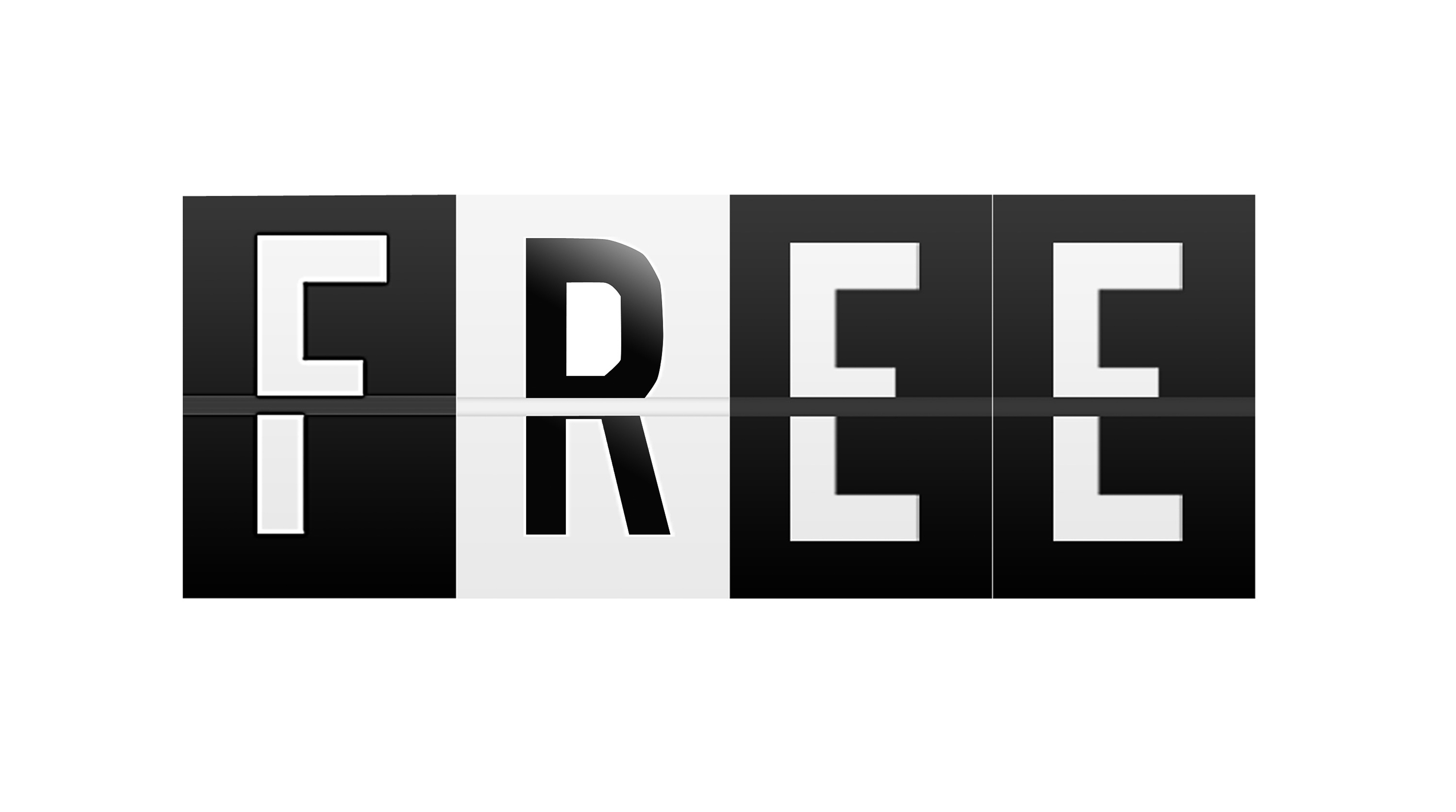Freemium Business Models: How Do Companies Give It Away for Free and Still Make a Fortune?
Freemium Business Models: How Do Companies Give It Away for Free and Still Make a Fortune?

The freemium business model is a strategy used by companies to attract customers by offering a basic version of their product or service for free while charging for more advanced features or functionality. This model has become increasingly popular in recent years, particularly in the world of software and online services. In fact, according to a report by McKinsey & Company, the freemium model is now used by over 60% of all digital businesses.
The appeal of the freemium model lies in its ability to attract a large user base by removing barriers to entry and providing a free product or service, while still generating revenue from a subset of users who are willing to pay for additional features or functionality. This can be a particularly effective strategy in markets with a low willingness to pay, where customers are more likely to try a product or service if it is offered for free. However, the freemium model also presents unique challenges, such as how to balance the needs of free and paying customers and how to convert free users into paying customers.
How did it all start?
The freemium business model has its roots in the software industry, with early examples dating back to the 1980s. However, it was not until the emergence of the internet in the 1990s that the freemium model really took off. One of the earliest examples of the freemium model in action was the web hosting service GeoCities, which launched in 1995 and offered users a basic website for free while charging for additional features and services.
In the years that followed, the freemium model became increasingly popular, particularly in the world of online gaming, where it was used to offer free-to-play games with the option to purchase in-game items or upgrades. Today, the freemium model is used by a wide range of digital businesses, including social media platforms, streaming services, and mobile apps. In fact, according to a report by Statista, the global revenue from freemium apps is expected to reach $354.8 billion by 2025, up from $145.2 billion in 2020. As the digital landscape continues to evolve, it is likely that the freemium model will remain a popular and effective strategy for businesses looking to attract and retain customers.
Pros of Freemium Business Model
The freemium business model offers several advantages and benefits to companies that choose to adopt it, such as:
Widens the audience reach by removing cost barriers
One of the key benefits of the freemium business model is that it removes the cost barrier that may prevent potential customers from trying out a product or service. This can be particularly effective in markets where customers are price-sensitive or have a low willingness to pay. Without asking customers to commit money up front, businesses can build a sizable user base and raise brand awareness by providing a free version. This can help to build a user base, which can ultimately translate into paying users.
Creates goodwill and trust with customers
By offering a free version, companies can demonstrate their commitment to providing value to customers, even before they have paid for anything. This can help to build a positive reputation and foster customer loyalty, which can be beneficial in the long term. When a company provides a free version of their product or service, they are essentially offering a gift to the user, and this can create a sense of goodwill and reciprocity. By providing value upfront, the company is building trust with its users, which can translate into customer loyalty and advocacy.
Generates revenue from a subset of customers willing to pay for additional features
Another advantage of the freemium model is the ability to generate revenue from a subset of customers who are willing to pay for additional features or functionality. This can be a particularly effective strategy in markets where customers have a high willingness to pay or where the product or service is mission-critical to their business or personal lives. Companies can create a need for their premium offering by providing a free version with limited functionality, which can be monetized through subscription fees, one-time purchases, or in-app purchases.
Provides valuable data and insights on customer behaviour
The freemium model can help companies gather data and insights on customer behaviour. By offering a free version, companies can track user activity and learn more about how their product or service is being used. This can be valuable information for product development, marketing, and customer support. In addition, by offering a free version, companies can gather feedback from customers and use this information to improve their product or service.
Potential for virality and word-of-mouth marketing
Finally, the freemium model has the potential for virality and word-of-mouth marketing. By offering a free version, companies can create a low-risk, high-reward scenario for users to share the product or service with their network. This can lead to organic growth and can be particularly effective in markets where social influence and referrals play a significant role. For example, Spotify, a popular music streaming service, offers a free version with ads, which has helped to drive its growth through word-of-mouth marketing.
Cons of Freemium Business Model
The freemium business model has its fair share of challenges and drawbacks that companies must consider before adopting it. Here are some of the key disadvantages:
Difficult to balance free and paid features
One of the main challenges with the freemium model is finding the right balance between the free and paid features of a product. A company needs to ensure that the free version provides enough value to attract new users, while also reserving enough valuable features for the paid version to incentivise users to upgrade. Companies may also face the risk of devaluing the paid version if the free version provides too many features that were previously exclusive to the paid version.
Can be costly to acquire and retain users
While offering a free version of a product can attract a large user base, it can also be costly to acquire and retain these users. The cost of acquiring users for a free product can be high, and free users are more likely to abandon the product than paid users. This makes it crucial for companies to have a solid retention strategy in place to keep users engaged and encourage them to upgrade to the paid version.
Can create confusion and complexity

Customers may struggle to understand the differences between the free and paid versions, or the different tiers of the paid version, making it difficult for companies to communicate their value proposition effectively.
Can be difficult to monetise
Freemium businesses rely on a small percentage of their user base to generate revenue through paid upgrades. It can be challenging to convert free users into paying customers, and even more challenging to convince them to pay enough to cover the cost of providing the free version. This can be especially difficult if the free version provides enough value to meet the user's needs, making it less likely for them to upgrade to the paid version.
Risk of cannibalisation
Offering a free version of a product can cannibalise sales of the paid version, leading to a net loss of revenue. This can happen if the free version is too similar to the paid version, or if users are content with the free version and don't see the value in upgrading. Companies need to find a way to differentiate the free and paid versions enough to justify the upgrade without devaluing the paid version or alienating the free users.
Ways to overcome the challenges and maximise the benefits
Businesses can overcome the associated challenges and maximise the benefits of this model by using the following steps:
Clearly define the value proposition of the free and paid versions
One of the most critical aspects of the freemium business model is ensuring that both the free and paid versions of the product have a clearly defined value proposition. This means businesses must communicate the differences between the free and paid versions of their product to avoid confusion and ensure that both versions provide clear value to the users. To achieve this, the business must focus on understanding their target audience, their needs, and preferences, and designing the free and paid versions accordingly.
Focus on customer acquisition and retention
Acquiring and retaining customers is crucial for the success of any business, and this is especially true for the freemium business model. Since the free version of the product serves as a marketing tool to attract users, businesses must invest in customer acquisition and retention strategies to ensure the costs of acquiring and retaining users are manageable and users are more likely to upgrade to the paid version. These strategies may include targeted advertising, social media marketing, referral programs, and customer support to help users overcome any obstacles they encounter while using the product.
Offer multiple tiers of paid features
Offering multiple tiers of paid features can provide more flexibility and options for customers, making it easier to convert them into paying customers. By providing customers with different levels of features, businesses can appeal to different customer segments with varying budgets and needs. This approach can also enable businesses to offer more value to paying customers while still providing a free version that is useful enough to keep users engaged and coming back.
Continuously test and iterate
In the freemium business model, it's crucial to continuously test and iterate the product and pricing strategy to maximise revenue and ensure that the business model remains viable over time. By tracking user engagement, feedback, and other relevant metrics, businesses can gain valuable insights into what's working and what isn't, allowing for adjustments to be made to the product and pricing strategy accordingly. This approach enables businesses to stay agile, respond to customer needs quickly, and remain
Monitor user behaviour and feedback
Finally, monitoring user behaviour and feedback is crucial to the success of the freemium business model. By gathering data on how users engage with the product, what features they use the most, and what pain points they encounter, businesses can refine their product and pricing strategies to meet the evolving needs of their target audience. User feedback can also help businesses identify areas for improvement, allowing them to stay ahead of the competition and continue to provide value to their customers.
Success Stories and What Contributed To The Success
Zoom, Dropbox, Spotify, and Canva are all successful companies that have utilised freemium business models to achieve their success. Here's a brief overview of each company and what contributed to their success:
Zoom
Zoom is a video conferencing platform that has experienced tremendous success with its freemium business model. The company's free version offers basic features such as one-on-one video calls and group meetings of up to 100 participants. To access more advanced features such as longer meeting durations and more participants, users must upgrade to a paid version. One of the key factors contributing to Zoom's success is its user-friendly interface and reliable performance. Additionally, the company's aggressive marketing efforts and partnerships with organisations such as schools and nonprofits have helped to increase its brand recognition and user base. During the COVID-19 pandemic, Zoom experienced explosive growth as remote work and virtual meetings became the norm.
Dropbox
Dropbox is a cloud storage and file-sharing service that has successfully implemented the freemium business model. The company's free version offers users 2GB of storage space, while paid versions offer additional storage and features such as collaboration tools and advanced security. Dropbox's success can be attributed in part to its ease of use and cross-platform compatibility, allowing users to access their files from any device. In addition, Dropbox's focus on user experience and customer support has helped to foster loyalty among its users. The company's early adoption by tech-savvy users and subsequent word-of-mouth marketing also played a role in its success.
Spotify

Spotify is a music streaming platform that has become a household name, in part due to its freemium business model. The company's free version allows users to listen to music with advertisements, while paid versions offer ad-free listening, offline playback, and additional features. One of the factors contributing to Spotify's success is its focus on personalised recommendations and discovery, using algorithms to suggest new music based on a user's listening history. Additionally, the company's partnerships with music labels and artists have allowed it to offer a vast library of music to its users. Spotify's success can also be attributed to its availability on multiple platforms, including mobile devices, smart speakers, and gaming consoles.
Canva
Canva is a graphic design platform that has experienced rapid growth using the freemium business model. The company's free version offers basic design tools and templates, while paid versions offer advanced features and functionality. Canva's success can be attributed to its user-friendly interface and extensive library of design templates, making it accessible to users with little or no design experience. In addition, the company's focus on social media marketing and user-generated content has helped to increase its brand recognition and user base. Canva's success has also been driven by its commitment to continuous improvement and innovation, regularly releasing new features and tools to meet the evolving needs of its users.
Closing Words
The freemium business model has proven to be a successful strategy for companies across various industries, from software to music streaming and design tools. It allows businesses to reach a wider audience and create brand awareness while generating revenue from a subset of customers willing to pay for additional features or functionality. The model also provides valuable data and insights on customer behaviour, which can be used to improve products and services.
Therefore, companies looking to adopt the freemium model must carefully evaluate the potential risks and benefits before implementing it. They must have a solid retention strategy in place to keep free users engaged and offer a clear value proposition for paid features to incentivize upgrades.

